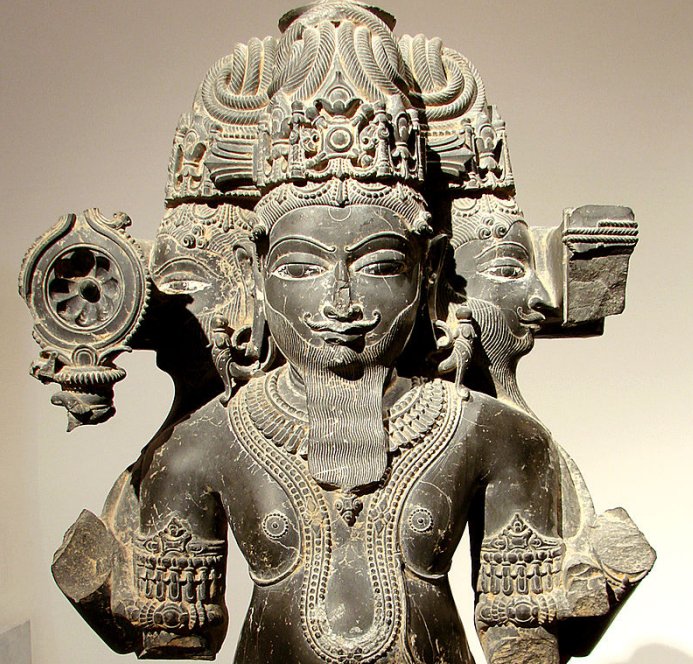Apedemak: Did The Three-Headed Lion War God Of Kush Originate From Ancient India?
Ellen Lloyd—AncientPages.com—Considered the war god of Kush, Apedemak was worshiped in ancient Meroe, a once magnificent and wealthy capital of the kingdom of Kush in Nubia, present-day Sudan.
Today, few ancient remains of the stunning buildings built by the Meroitics remain, but archaeologists have confirmed that the tall, slender pyramids, paintings, writing scripts, and other artistic and cultural forms made by the Nubian people were in the Egyptian style.
Three-headed Apedemak with four arms is depicted at Naqa Lion Temple. Clemens Schmillen, CC BY-SA 4.0
Three Kushite kingdoms dominated Nubia for over 3,000 years, with capitals in Kerma, Napata, and Meroe.
The ancient kingdom of Kush was very powerful and rival to Egypt, but there were many similarities between these two ancient civilizations.
God Apedemak (Apademak) was worshipped in various parts of Nubia. He was held in high regard because people believed this mighty deity brought victories to their armies and defeated their enemies.
There are various depictions of Apedemak. In several Meroitic temples, God Apedemak is depicted as a lion with three heads and four arms. Sometimes, he is portrayed as a snake with a lion head or simply a man with a lion head.
Studies reveal “the figure of Apedemak decidedly prevails, either human-bodied and lion-headed; or in zoomorphic figure representing him either as war-god with bow and arrows; or as a benefactor of mankind offering ankh-signs. However, his royal character is emphasized by the hemhem crown and his solar character is stressed by the sun-disk with wings and uraei." 1
Can God Apedemak Be Traced To Ancient India?
Some scholars have speculated whether God Apedemak can be traced to ancient India. If true, the lion God Apedemak may be one of the few gods depicted on the walls of Meroitic temples who is not Egyptian.
Archaeological excavations reveal that ”the Meroites, although having gods of their own, drew heavily on Pharaonic and Ptolemaic Egyptian ideas and motifs in depicting them as well as incorporating Egyptian gods into their own pantheon.” 2
In the book, Apedemak, Lion God of Meroe: A Study in Egyptian Meroitic Syncretism. L.V. Zabkar explores the theory the war god of Kush was created in the images of ancient Indian deities. 2
Sculpture of Brahma, Guimet Museum, Paris, France. Image source: Vassil - Public Domain.
“The book reviews in detail what is known of Apedemak, describes the numerous representations and shows how much of the iconogrpahy of this god is of Egyptian origin – even those aspects which have led some scholars to suggest influences from India, particularly in the multi-armed and-headed representation on the west wall of the lion temple at Naqa. Zabkar goes into some detail on this matter, arguing that there is plenty of evidence from Egypt to account for the so-called Indian aspects.” 3
The famous Hindu god Shiva is depicted with multiple heads and arms. Hindu God Brahma is a deity with four faces and four arms, sitting on a lotus flower, in a chariot (vahana), pulled by divine swans. Each face of Brahma points to a cardinal direction, but is this enough to draw parallels between the Kushite war god Apedemak and ancient Indian deities?
Apedemak is represented as a coiled snake with a lion’s head at Naqa Lion Temple. Clemens Schmillen, CC BY-SA 4.0
Most scholars think that though the representation of Apedemak is exotic, it is still a deity influenced by the Meroites’ artistic models, which can be traced to ancient Egypt.
One must remember that the lion has been a powerful ancient symbol for thousands of years.
Ancient civilizations associated the lion with power and royalty, and we can find this majestic animal in prehistoric cave paintings, ancient Sumerian and Egyptian artifacts dating back to 3000 B.C., and several ancient monuments, such as the marvelous lion gates in Hattusha, the capital of the kingdom of the Hittites.
Updated on June 4, 2024
Written by Ellen Lloyd – AncientPages.com
Copyright © AncientPages.com All rights reserved. This material may not be published, broadcast, rewritten or redistributed in whole or part without the express written permission of AncientPages.com
Expand for references- Vincentelli, Irene. "A Group of Figurated Clay Sealings from Jebel Barkal (Sudan)." Orientalia, NOVA SERIES, 61, no. 2 (1992)
- Shinnie, P.L. The International Journal of African Historical Studies 10, no. 3 (1977): 492-94. doi:10.2307/216747.
- V Zabkar - Apedemak, Lion God of Meroe
More From Ancient Pages
-
 Long-Lost Legendary Ancient Temple Discovered On San Miguel Hill In Mexico
Archaeology | Oct 20, 2023
Long-Lost Legendary Ancient Temple Discovered On San Miguel Hill In Mexico
Archaeology | Oct 20, 2023 -
 Thousand year old Pagan warrior tomb discovered in Poland
News | Aug 23, 2015
Thousand year old Pagan warrior tomb discovered in Poland
News | Aug 23, 2015 -
 The Egyptian Dream Book Reveals Ancient Predictions Of The Future
Egyptian Mythology | Jun 6, 2020
The Egyptian Dream Book Reveals Ancient Predictions Of The Future
Egyptian Mythology | Jun 6, 2020 -
 Unknown Ancient Settlement Overlapping The Old City Of Nakhon Ratchasima Discovered
Archaeology | Mar 14, 2025
Unknown Ancient Settlement Overlapping The Old City Of Nakhon Ratchasima Discovered
Archaeology | Mar 14, 2025 -
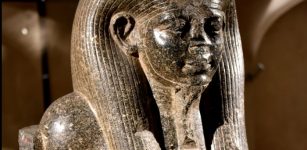 Hapi: Early Egyptian God Of The Nile And Bringer Of Fertility, Abundance And Life
Egyptian Mythology | Mar 20, 2019
Hapi: Early Egyptian God Of The Nile And Bringer Of Fertility, Abundance And Life
Egyptian Mythology | Mar 20, 2019 -
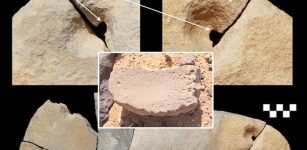 Study: Grinding Tools Were Once Used In Plant, Pigment And Bone Processing At Jebel Oraf Site, Saudi Arabia
Archaeology | Oct 6, 2023
Study: Grinding Tools Were Once Used In Plant, Pigment And Bone Processing At Jebel Oraf Site, Saudi Arabia
Archaeology | Oct 6, 2023 -
 Surprising Discovery Of Ancient Roman Salt Factory In England
Archaeology | Oct 8, 2020
Surprising Discovery Of Ancient Roman Salt Factory In England
Archaeology | Oct 8, 2020 -
 Drought Encouraged Attila’s Huns To Attack The Roman Empire – New Study
Archaeology | Dec 15, 2022
Drought Encouraged Attila’s Huns To Attack The Roman Empire – New Study
Archaeology | Dec 15, 2022 -
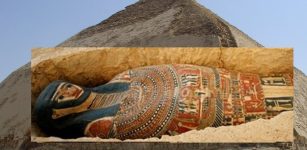 Egypt Opens Two Ancient Pyramids And Unveils Newly Found Sarcophagi And Mummies
Archaeology | Jul 15, 2019
Egypt Opens Two Ancient Pyramids And Unveils Newly Found Sarcophagi And Mummies
Archaeology | Jul 15, 2019 -
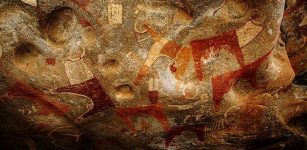 Somalia’s Legacy: Laas Geel Caves Covered With At Least 5,000-Year-Old Paintings
Civilizations | Oct 18, 2018
Somalia’s Legacy: Laas Geel Caves Covered With At Least 5,000-Year-Old Paintings
Civilizations | Oct 18, 2018 -
 Setne Khamwas And The Book Of Magic Written By Thoth
Featured Stories | Jan 20, 2016
Setne Khamwas And The Book Of Magic Written By Thoth
Featured Stories | Jan 20, 2016 -
 Hidden Ancient Citadel In The Mayan City Of Tikal Discovered By LIDAR
Archaeology | Sep 28, 2021
Hidden Ancient Citadel In The Mayan City Of Tikal Discovered By LIDAR
Archaeology | Sep 28, 2021 -
 DNA From 35,000-Year-Old Romanian Skull Reveals Flaws In The Theory Of Evolution
Archaeology | May 25, 2021
DNA From 35,000-Year-Old Romanian Skull Reveals Flaws In The Theory Of Evolution
Archaeology | May 25, 2021 -
 Book Of Kells: Illuminated Medieval Manuscript From Monastery On Iona, Scotland
Artifacts | Feb 8, 2018
Book Of Kells: Illuminated Medieval Manuscript From Monastery On Iona, Scotland
Artifacts | Feb 8, 2018 -
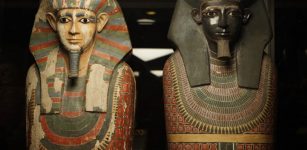 Egyptian Tomb Of The Two Brothers – DNA Solves Ancient Egyptian Mystery
Archaeology | Jan 17, 2018
Egyptian Tomb Of The Two Brothers – DNA Solves Ancient Egyptian Mystery
Archaeology | Jan 17, 2018 -
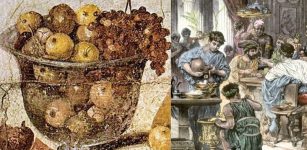 Citrus Was An Ancient Roman Symbol Of Status And Luxury
Ancient Symbols | Aug 23, 2017
Citrus Was An Ancient Roman Symbol Of Status And Luxury
Ancient Symbols | Aug 23, 2017 -
 Why Were Swords So Important To Ancient Vikings?
Ancient History Facts | Oct 4, 2017
Why Were Swords So Important To Ancient Vikings?
Ancient History Facts | Oct 4, 2017 -
 2,000-Year-Old Rare Sarcophagus With Human Remains Discovered In Rock-Cut Cave In India
Archaeology | Jan 18, 2018
2,000-Year-Old Rare Sarcophagus With Human Remains Discovered In Rock-Cut Cave In India
Archaeology | Jan 18, 2018 -
 X-Ray Of Skulls Reveals Vikings Suffered From Several Diseases
Vikings | Feb 25, 2025
X-Ray Of Skulls Reveals Vikings Suffered From Several Diseases
Vikings | Feb 25, 2025 -
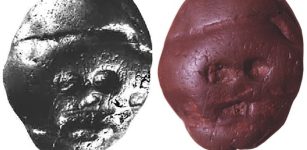 Why Are Manuports Like The Makapansgat Cobble Interesting Archaeological Artifacts?
Artifacts | Mar 15, 2024
Why Are Manuports Like The Makapansgat Cobble Interesting Archaeological Artifacts?
Artifacts | Mar 15, 2024


